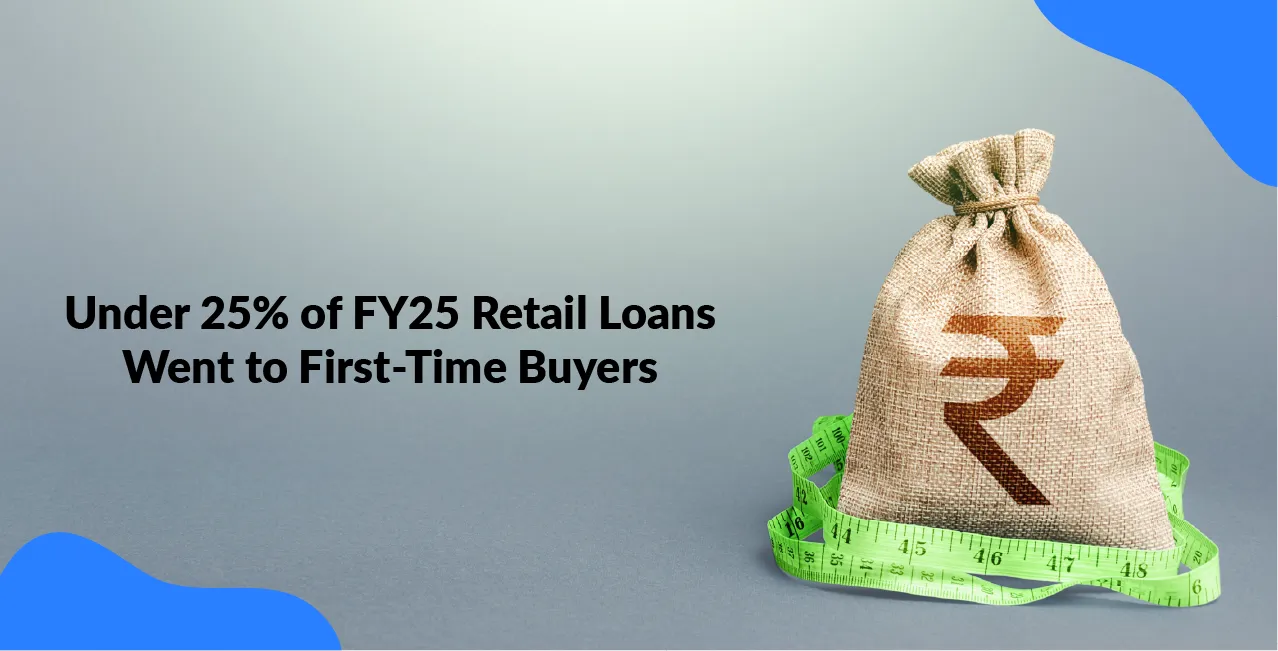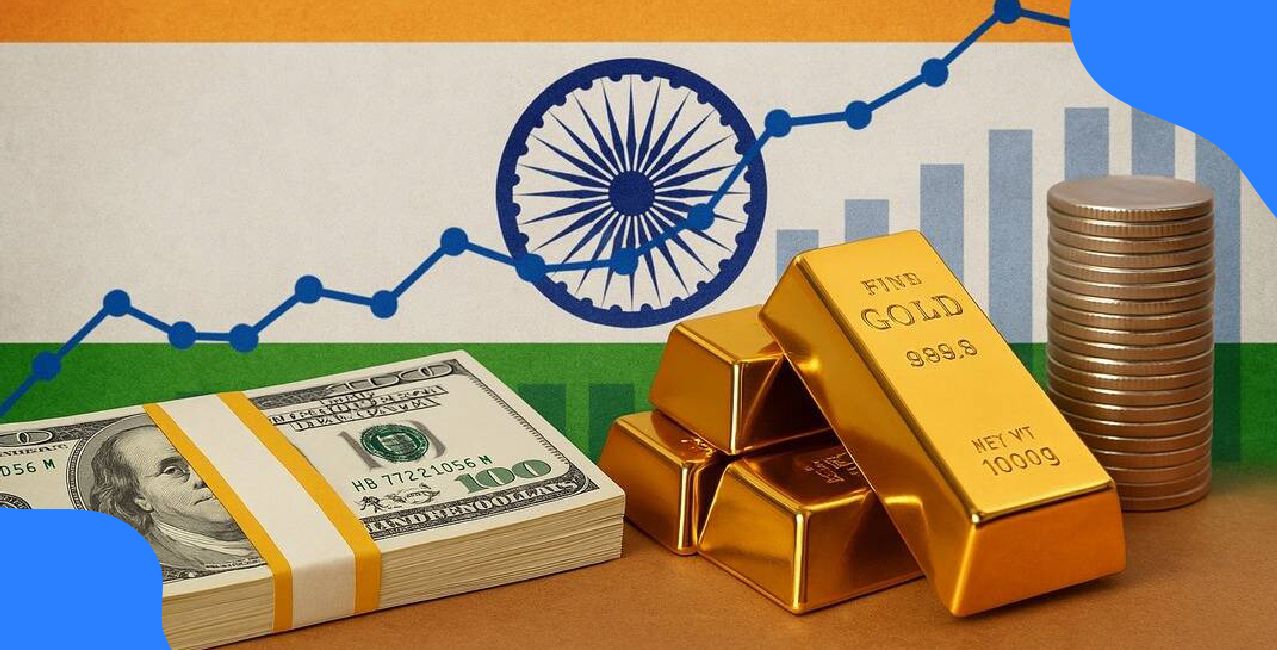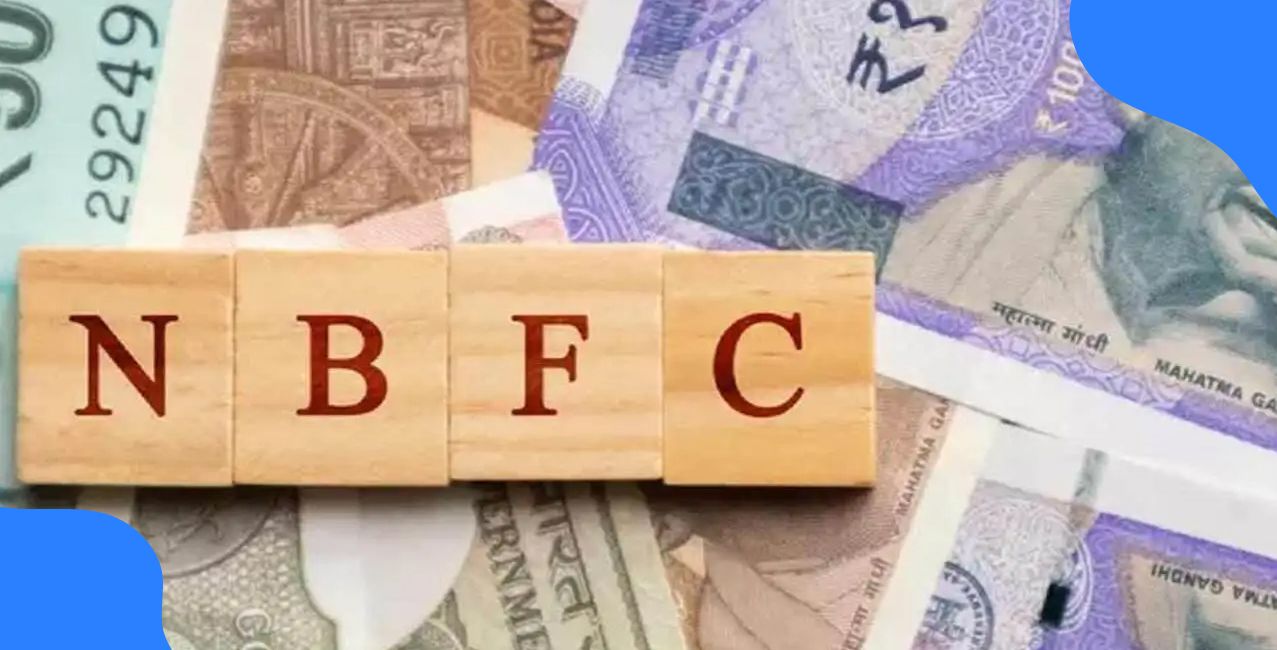
Author
LoansJagat Team
Read Time
4 Min
10 Jul 2025
Under 25% of FY25 Retail Loans Went to First-Time Buyers
New borrowers lose ground as banks grow cautious despite push for inclusion.
Is getting a first loan harder now than before? Until March 2025, new borrowers thought getting a loan was easy, just like it was after the pandemic. Simple digital forms, pre-approved deals, and easy checks gave the impression that loans were always available.
But that feeling is fading. In FY 2024–25, fewer than 25% of retail loans went to first-time borrowers. Banks are pulling back in many parts of India. This data comes from credit bureau CRIF Highmark, which shared the findings in early July. The report says lenders now prefer borrowers with credit histories. Only one in four retail loans went to people borrowing for the first time.
The numbers reveal a clear shift but they may not tell the whole story.
Two-Wheelers Still Welcome First-Timers
Interestingly, not every loan type tells the same story. While personal loans and credit cards have slowed down for new borrowers, two-wheeler loans remain an exception.
Read More – How to Get a Personal Loan in India Without a Credit History
According to the same report by CRIF Highmark, 49.2% of two-wheeler loans in FY 2024–25 went to first-time borrowers. This is almost identical to the 49.1% recorded the previous year. Two-wheelers remain a common first step into formal credit, especially in rural and semi-urban areas.
This trend shows that while banks are wary of risk, they still see entry-level vehicle financing as manageable. It also reflects how two-wheelers are still tied to work and daily mobility, making them a lower-risk bet for many lenders.
Caution Behind Closed Doors
Inside banks, risk managers are tightening rules. Several banks are demanding more proof of income, cross-checking job stability, and using data analytics to track past online purchases or digital behaviour before loan approval. This shift is driven by fears of repayment delays, especially in unsecured lending.
Speaking off the record, an official from a large private bank explained that many new applicants “apply without steady jobs or proper documents.” Others apply for multiple loans at once, which often leads to rejections.
These behind-the-scenes changes are not openly discussed in most public reports, but they are a growing factor in why new borrowers are being turned away.
Mudra Loans: A Partial Relief for First-Timers
The Pradhan Mantri Mudra Yojana (PMMY), launched in 2015, aims to help small business owners, especially those without a formal credit history. According to the Ministry of Finance’s Annual Report 2024–25, about 20% of Mudra loans this year went to first-time borrowers. That’s a significant share, considering over 5 crore loans were issued.
The report also noted that the average ticket size under Mudra rose to ₹1.02 lakh. This is higher than previous years, showing that borrowers are asking for more money.
In addition, over 10.6 crore first-time borrowers have received Mudra loans since the scheme began. These numbers point to a sustained effort by the government to reach those left behind by private banks.
The Divide Between Banks and NBFCs
While banks grow more cautious, non-banking finance companies (NBFCs) are still active in lending to first-timers. According to trends mentioned in the NITI Aayog’s 2024 review of PMMY, NBFCs tend to take slightly higher risks, especially in rural lending.
Some newer NBFCs focus entirely on people with no credit history. Their interest rates are usually higher, but they’re still the only option for many.
Also Read - 4 Common Loan Mistakes First-Time Borrowers Make
This gap between cautious banks and flexible NBFCs is likely to grow if current trends continue.
Policy makers have tried to encourage lending through digital platforms and new schemes. But the gap will only widen unless more banks open their doors to new borrowers.
CRIF’s July report reminds us that policies alone don’t drive access; practical execution matters too.
Conclusion
With the financial year still unfolding, the next round of data in early 2026 will show whether this downward trend in first-time lending continues. The message is clear for now: those without a credit history must work harder to get approval.
Government efforts like Mudra and Skill Loans fill some gaps, but private lending remains selective. If banks reject new borrowers at this pace, millions may turn toward informal credit or costlier loans.
This raises questions about inclusion in a country where over 400 million people still have little or no access to formal credit.
The final section examines what steps might shift this balance in the months ahead.
As the economy grows, banks, regulators, and lenders must decide whether to include the millions still waiting at the doorstep or leave them behind.
About the Author

LoansJagat Team
‘Simplify Finance for Everyone.’ This is the common goal of our team, as we try to explain any topic with relatable examples. From personal to business finance, managing EMIs to becoming debt-free, we do extensive research on each and every parameter, so you don’t have to. Scroll up and have a look at what 15+ years of experience in the BFSI sector looks like.

Quick Apply Loan
Subscribe Now
Related Blog Post

LoansJagat Team • 11 Dec 2025

LoansJagat Team • 11 Dec 2025

LoansJagat Team • 12 Dec 2025